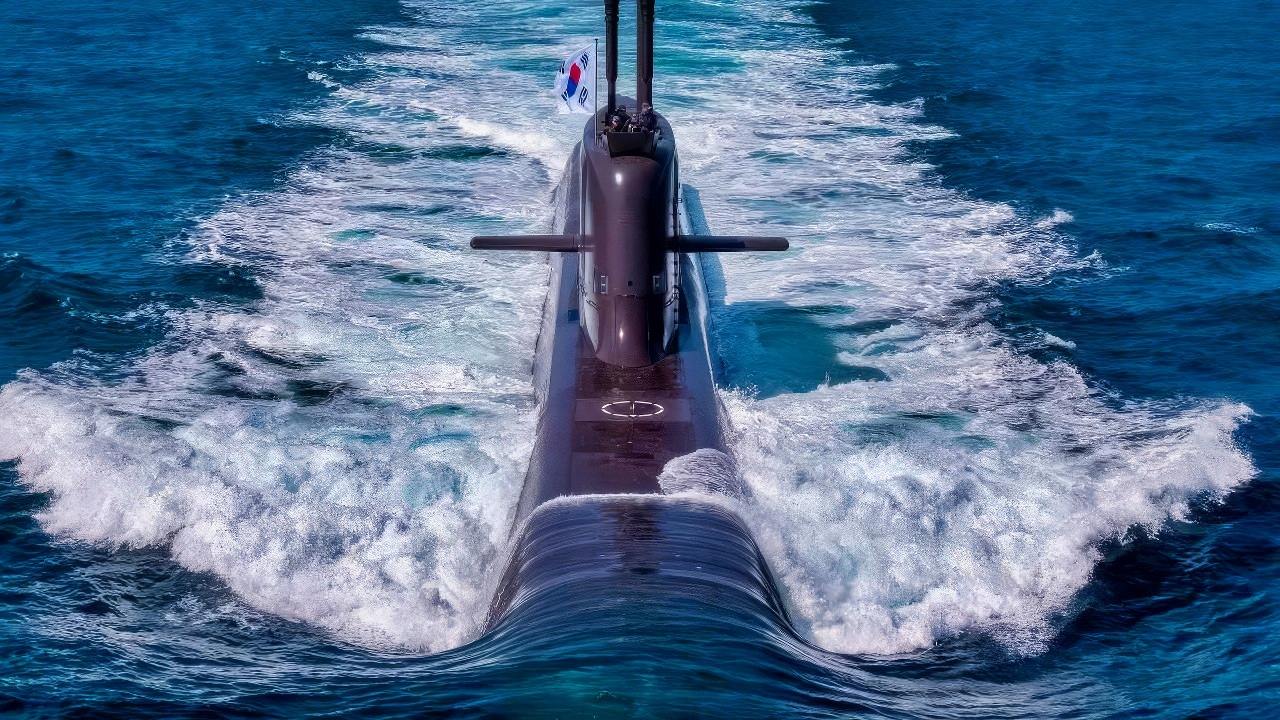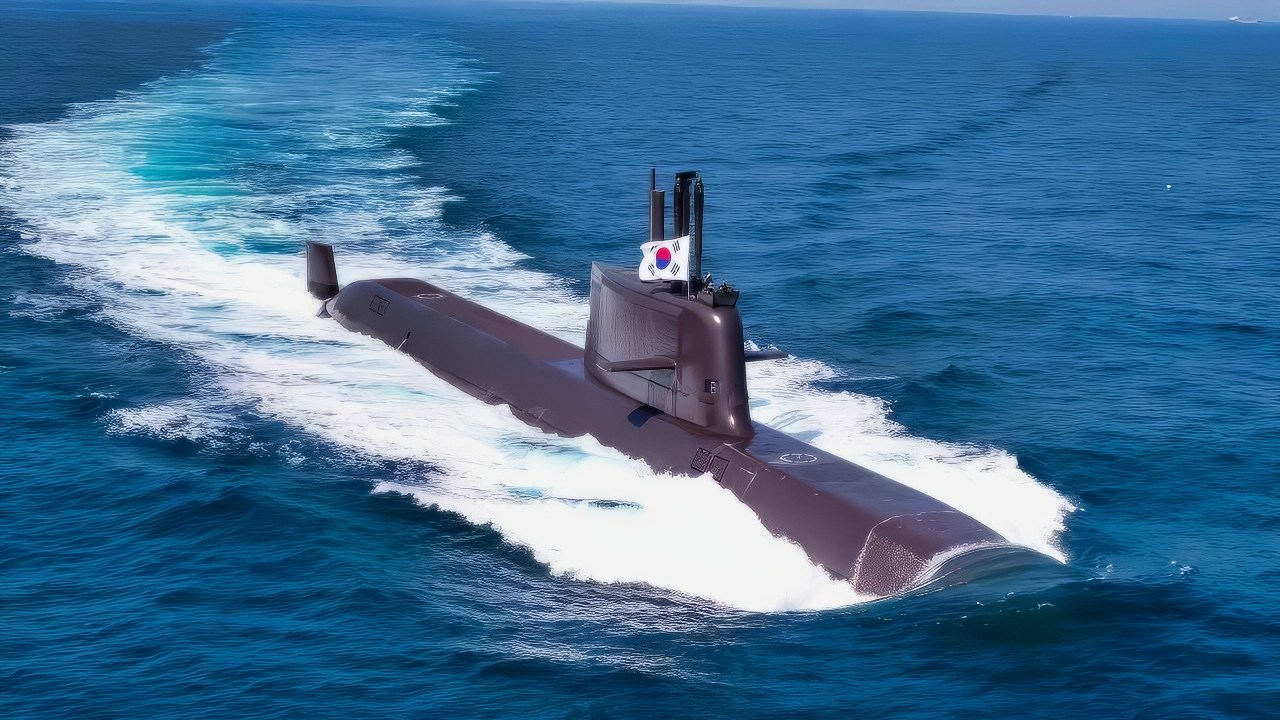Article Summary – Washington has quietly approved South Korea’s long-sought push for nuclear-powered attack submarines, pledging U.S. help on design and reactor fuel while Hanwha explores building boats at its Philadelphia yard.
-Seoul’s defense leaders argue Korean shipyards can deliver faster, leveraging decades of submarine experience.

KSS-III submarine from South Korea. Image Credit: Creative Commons.
-Nuclear propulsion would give South Korea unprecedented reach and deterrent power against North Korea and China, while pulling Seoul into an emerging “AUKUS Plus” undersea coalition alongside Australia, the UK and potentially Japan.
The deal signals a major shift in Indo-Pacific naval power—and a historic break with past U.S. technology restrictions.
US To Help South Korea Build Nuclear-Powered Submarines
South Korea’s government announced an agreement with Washington under which U.S. shipbuilders will help Seoul construct nuclear-powered submarines. The U.S. has approved the program, which will provide attack submarines to South Korea’s navy, and has agreed to help source nuclear fuel for the submarines’ reactors, a fact sheet from the White House detailed on Thursday.
The White House statement released last Thursday specified that Washington has “given approval for the Republic of Korea to build nuclear-powered attack submarines…[and would] work closely to advance requirements for this project, including avenues to source fuel.”
U.S. President Donald Trump wrote earlier on his Truth Social platform that the boats would be constructed at a shipyard in Philadelphia run by the Hanwha Ocean division of the South Korean Hanwha Group.
The company is South Korea’s foremost submarine producer and is in negotiations to sell conventionally powered subs to Canada, the Philippines, and Poland.
Only six countries operate nuclear-powered submarines: the U.S., China, Russia, the UK, France, and India. This agreement marks a significant boost to South Korea’s strategic relations with the U.S. and hints at a change in the balance of naval power in the Pacific.
The announcement also takes place during a time of increasing tensions on the Korean Peninsula caused by North Korea’s nuclear weapons program. China has also taken a more aggressive stance toward adversaries such as South Korea and Japan.
Maybe Not the Right Yard
One of the proverbial flies in the ointment is South Korean officials’ belief that the Philadelphia yard is not equipped with adequate infrastructure, security controls, or the highly trained workforce required to build nuclear-powered naval vessels.
This concern has prompted officials such as Defense Minister Ahn Gyu-back to favor plans to build the submarines in Korea. Ahn and others point out that Korean shipyards are already equipped with the necessary facilities, and their personnel have adequate expertise derived from the construction of conventionally powered submarines.
“Philly Shipyard lacks such facilities,” said Ahn this past Sunday. “Domestic [Korean] construction is the most rational approach.”
There are only two private boatyards in the United States that have the capacity and personnel to build nuclear submarines. Those shipyards both have full order books for at least the next decade, and there is no surge capacity remaining.
The Hanwha Philly Shipyard’s new Korean owners have already detailed their plans to build a large volume of commercial and military-grade ships at the American facility. However, these will be vessels, like supply ships or tankers, that are not technologically demanding.
Ahn’s position is that, given demonstrated Korean fluency with submarine technologies, the South Korean yards would be able to construct a nuclear sub more rapidly.
“Core technologies such as reactor assembly completion and power conversion device technology have advanced considerably,” said Ahn, speaking to South Korean broadcaster KBS. “While it typically takes over 10 years, we can achieve this in a shorter timeframe.”
Growing Korean Technological Prowess
The nearly silent propulsion system and the comparatively unlimited range of a nuclear-powered boat guarantee stronger deterrence against North Korea, says Ahn.
Nuclear-powered submarines do not run out of fuel, nor do they require a battery charge, and they can remain submerged for weeks.
“Kim Jong-un, North Korean leader, probably won’t be able to sleep well,” he added. “[Whether] it might emerge in the east, west, or south—and its submerged capabilities and speed, it might send a chill down their spines.”
Possibly even more meaningful are the strategic implications of South Korea joining the club of nations that operate nuclear-propelled submarines. The AUKUS program, via which the U.S. and the UK will provide nuclear-powered submarines to the Royal Australian Navy, is now expanding beyond those three initial partner nations.
“What began as a narrow US–UK–Australia submarine pact is now functioning as the nucleus of a wider, networked alliance framework oriented around undersea deterrence and advanced military technology,” reads a recent paper from the Beyond Horizons think tank.
“Washington’s unprecedented decision to share nuclear-propulsion technology with Seoul – combined with South Korea’s decision to build SSNs in a US shipyard it owns – represents a major break with past US restrictions and effectively creates an ‘AUKUS Plus’ dynamic,” writes the organization’s Asia Pacific Task Force group analysts.
In addition to South Korea, Japan is also reportedly moving into the AUKUS framework as well.
A genuine “networked deterrence coalition” is being created, concludes the think-tank report. “Shared submarine production, distributed technology development, and industrial burden-sharing are replacing siloed bilateral arrangements, reshaping Indo-Pacific power balances.”
About the Author: Reuben F. Johnson
Reuben F. Johnson has thirty-six years of experience analyzing and reporting on foreign weapons systems, defense technologies, and international arms export policy. Johnson is the Director of the Asia Research Centre at the Casimir Pulaski Foundation. He is also a survivor of the Russian invasion of Ukraine in February 2022. He worked for years in the American defense industry as a foreign technology analyst and later as a consultant for the U.S. Department of Defense, the Departments of the Navy and Air Force, and the governments of the United Kingdom and Australia. In 2022-2023, he won two awards in a row for his defense reporting. He holds a bachelor’s degree from DePauw University and a master’s degree from Miami University in Ohio, specializing in Soviet and Russian studies. He lives in Warsaw.










